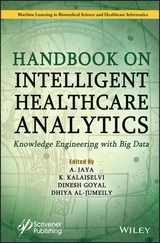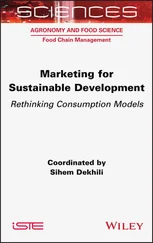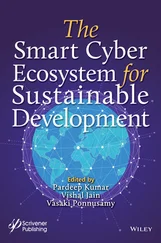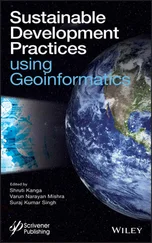Chapter 38proposes a method based on a combined approach of extrinsic content sensors and ab-initio signal sensors to predict boundary exons in human sequences. Here, a homology-based exon prediction method is used which utilizes external information from sources like transcript and protein databases. The method is evaluated at a nucleotide as well as exon level. The experimental results indicate that the proposed method is appropriate for predicting boundary exons with a significant level of accuracy. It also demonstrated superior performance when compared with existing protein-coding gene prediction methods.
Chapter 39discusses a blood glucose monitoring system with 5-fixed LED wavelengths in near-infrared (NIR) region at 2.12 μm, 2.24 μm, 2.27 μm, 2.31 μm and 2.33 μm as a source of excitation. The Jetson Nano board having ARM Cortex A57 is used to control these LED sources. The authors recorded 57 spectra on laboratory samples prepared to resemble blood, having proportions as per the major constituents (glucose, ascorbate, urea, lactate, and alanine) present in the blood. Out of 57spectra, 53 were used for calibration set and 4 were used for validating the model. Partial least square regression (PLSR) prediction algorithms are developed in Python and run on Jetson Nano board.With PLSR, the result of glucose prediction gave a root mean square error (RMSE) of 12.01mg/dL, determination coefficient R 2= 0.97 and accuracy of 90.14%. A back propagation–artificial neural network (BP-ANN) model is developed on Jetson Nano board for accuracy. This BP-ANN model is used to train the same 53 sample data sets and 4 for validating the model. The system is validated with Clarke error grid analysis (CEGA) and Bland–Altman analysis.
Chapter 40envisions the potential of geographic information systems (GIS) in combating COVID-19. These systems play an important role in many areas, including quick mapping of epidemic information, spatial monitoring of cases reported, forecasting of district transmission of epidemic hazard and mitigation, and social-emotional assistance for decision-making and control. The authors have collected the state-level variation of COVID-19 pandemic prevalence spreading across the Gujarat state of India. In the present study, they prepared four maps, namely, confirmed positive cases, cases tested for COVID-19, patients recovered, people under quarantine, and total deaths as per data collected from the government. Cluster zones can be easily identified by the GIS-based mapping approach. Outcomes of the study demonstrated that Ahmedabad city in Gujarat has suffered more as a result of this pandemic.
Chapter 41proposes a mobile-based medical alert system for a COVID-19 detection system using ZigBee technology. The health report of the user will be sent to the caretaker or doctor via a cloud computing network for analysis. The real-time monitoring of body temperature and symptoms of COVID-19 and data transmission via remote sensing is also realized.
In conclusion, this book highlights the important role artificial intelligence playsin smart living and sustainable development along with the critical need for more research in the field. It provides a comprehensive overview of the latest breakthroughs and recent progress in intelligent technologies; and highlights relevant sustainable intelligent computing technologies, uses, and techniques across various industries. We hope that readers will significantly benefit from this book academically, scientifically and societally; and that it will expand opportunities and open new scientific paths to foster the discovery of knowledge and its applications.
Mukhdeep Singh ManshahiaPunjabi University, Patiala, Punjab, India Valeriy KharchenkoFederal Scientific Agroengineering Center, VIM, Moscow, Russia Elias MunapoDepartment of Statistics & Operations Research, NWU, Mafikeng Campus, South Africa J. Joshua ThomasUOW Malaysia KDU Penang University College, Malaysia Pandian VasantUniversiti Teknologi PETRONAS, Malaysia
The editors wish to acknowledge the support of everyone involved in creating this book. We would like to sincerely thank the researchers for their wonderful help and support in reviewing all the chapters with total dedication. Our sincere thanks go out to the authors of the chapters who contributed their time and expertise to this book. Some of the authors also served as referees; we greatly appreciate their double task.
The editors are grateful to Professor Gerhard-Wilhelm Weber for the excellent foreword to this book and his precious assistance. The editors are confident that this book will certainly be useful to a wide circle of readers, from students to specialists in the field.
Our sincere thanks also goes out to the entire staff of Scrivener Publishing for their invaluable support in completing this book. In particular, special thanks to Mr. Martin Scrivener, Scrivener Publishing, and Dr. Prasenjit Chatterjee, series editor, for their guidance and cooperation.
Moreover, we would also like to thank our organizations for providing us with the facilities required to accomplish this project.
Finally, we express our heartfelt gratitude and reverence to our family members for their boundless love, support and motivation during the entire journey of this project.
Mukhdeep Singh ManshahiaPunjabi University, Patiala, Punjab, India Valeriy KharchenkoFederal Scientific Agroengineering Center, VIM, Moscow, Russia Elias MunapoDepartment of Statistics & Operations Research, NWU, Mafikeng Campus, South Africa J. Joshua ThomasUOW Malaysia, KDU Penang University College, Malaysia Pandian VasantUniversiti Teknologi PETRONAS, Malaysia
Part I INTELLIGENT COMPUTING AND APPLICATIONS
1
Assessing Mental Workload Using Eye Tracking Technology and Deep Learning Models
Souvik Das*, Kintada Prudhvi and J. Maiti
Indian Institute of Technology, Kharagpur, India
Abstract
The current study has proposed a mental workload prediction model using neural network and Bernoulli Boltzmann machine. For measuring mental workload, eye movement metrics were considered. The eye metrics were computed from the raw eye movement data, which were recorded using eye tracking device while solving a coding problems. We have found that the Bernoulli Boltzmann machine provides better accuracy in prediction of mental workload from eye metrics. The reason of providing low accuracy by neural network model may be attributed to less data. In future, the sensitivity of the neural network model can be observed by collecting more eye movement data.
Keywords:Mental workload, eye tracking, coding, deep learning model, artificial neural network, Bernoulli Boltzmann machine
Mental work load or cognitive work load analysis is very important in analyzing the performance of a person. It is one of the most important construct in cognitive ergonomics for correct understanding the performance of a person. One other way to describe the mental work is that it is obtained by collective functioning of all the factors that contribute for the work load efficiency for a given task load. Workload can be described as a mental construct which reflects the mental strain resulting from performing a task under specific environmental and operational conditions which are coupled with the capability of the operator to respond to those demands. Workload is not only task specific, but it is also person specific. Work load not only involves individual capacities but also motivation to perform a task. Task can be said as a demand placed upon the humans. There are many ways to measure the mental work load; some of them are as follows:
Читать дальше












